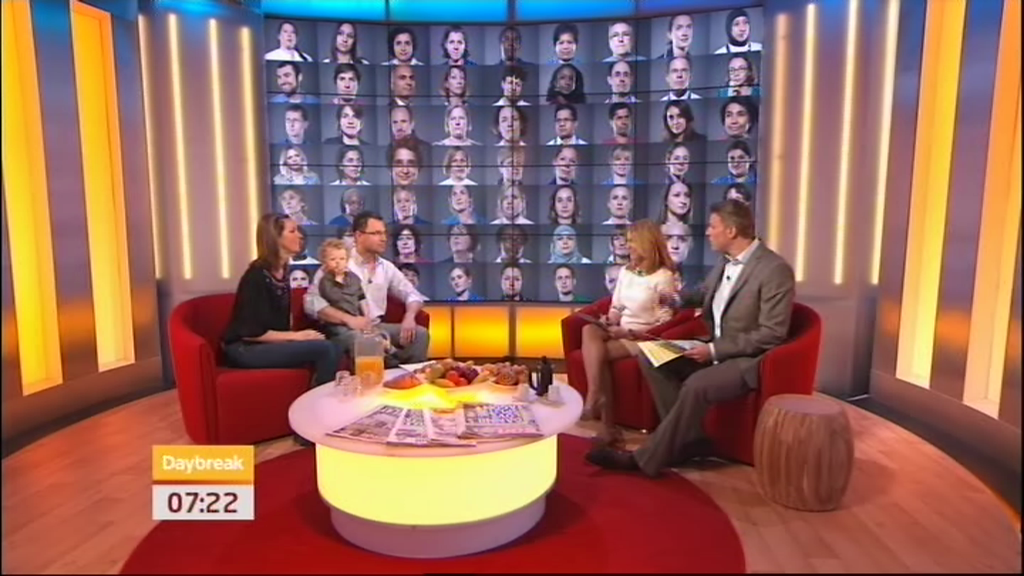
What a difference a day makes.
Taking beautiful pictures is all very well, but creating images which make a difference has always been my motivation. It sounds rather highfalutin, but it can be as simple as producing a set of wedding photographs that are prized and treasured by the subjects. Knowing that they will be cherished and examined for generations to come is hugely pleasing.
At a more profound level is the the thought that images might inform and consequently change behaviour, affecting people’s lives for the better. This kind of ambition is most often heard from photojournalists. Some of them manage to make that difference, but to be frank the only way to achieve it is to pitch the stories in the right way to the right audience. Too often a good story is presented to an audience which either already knows the subject or is unlikely to be affected and react to it.
As I have mentioned previously on Blue Filter, I created the story Phineas’ Friends to do two things: raise the profile of the Evelina Children’s Hospital, and educate people about the huge teams of specialists which are the reality of 21st Century hospital-based health care.
Initially the aim was to shoot the story and get it published in a weekend colour supplement, which was achieved in the Guardian Weekend magazine.
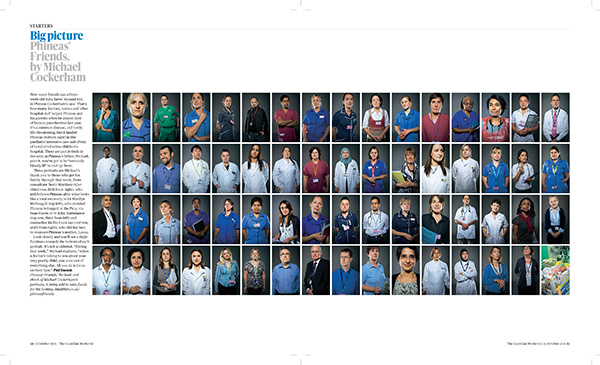
Following that publication I was contacted by many people who had been affected by the article, and there was a surge in sales of the book both as paperback and iBook. It would have been easy to let it drop at that point and move on to other things, but I was conscious that only a small fraction of the country reads the Guardian, and I wanted to push on for publication in more widely read periodicals.
On the back of the Guardian publication I was approached by a freelance journalist who wanted to do a completely different treatment of the story for a cheap women’s weekly called Pick Me Up. In essence I was told that they weren’t interested in my story as such because I was a man (interestingly Marie Claire had very nearly taken the story instead of the Guardian but didn’t because it was felt that their readers wouldn’t connect with a story created by a man – nice to see sexism is still alive and well), but that they would like to do something from my wife’s point of view. We – my wife and I – agonised over this for months before coming to the conclusion that if my ambition really was to raise the profile of the hospital we should let it go ahead. We pushed to make sure that Phineas’ Friends got a good mention, and that links to this blog were included to boost sales of the book. Having seen the Guardian Big Picture run in October of 2011, Pick Me Up ran their story in March of 2012.
If I am honest the writing in Pick Me Up made me cringe, but I let it wash over me, reminding myself why I had done it. As it happens, it turned out to be one of the best decisions I made. Within a couple of days I took a call from another journalist saying she had seen the story in Pick Me Up, and that the Daily Mail was interested in running my story over half a page. That subsequently became a page, then two pages, and finally three full pages. To get three full pages in a national daily on a piece that doesn’t involve a terrorist attack or some major scandal is almost unheard of, and from the perspective of broadening the base of people who would see my story I could not possibly have asked for anything better.

To put this in context, the Daily Mail is the second highest circulation daily in the UK, with figures for June of this year of 1.93 million. Only The Sun manages higher figures with 2.58 million, and the third placed Mirror sold nearly a million less than the Mail per day. Add to that the fact that the Mail Online overtook the New York Times earlier this year to become the most widely read online English language news website in the world with nearly 60 million distinct readers a month, and Phineas’ Friends (and by extension, the Evelina) was going to get huge exposure in front of a massive audience.
Working with the editors and journalists at The Mail was a pleasure, if somewhat intense. I think in the final few days prior to publication I must have been on the phone either to them or people at the Evelina every five minutes checking facts or getting quotes.
What a difference a day makes.
Within an hour of waking up on that Tuesday morning in April when the Mail was published, my phone started to ring off the hook. First the local BBC news wanted to know if they could come out to do a piece on me that day for the evening news, then the local newspaper group asked for interviews. Then ITV rang to ask if I would go on Daybreak. Then I was asked to do a radio interview. It went on like that all day.
I had mistakenly thought that it would be a normal day, and had a commercial shoot scheduled in Whitstable. But by the time I finished that shoot at 1pm my day had changed beyond recognition. A journalist met me in the car park in Whitstable to record an interview for the local radio. I had answered questions for a paper on the drive back to my office, and taken calls to agree to the story running in the Daily Mirror and the Daily Record, and agreed syndication on the story.
During all this I arranged to go into the BBC South East Today studio to do a live interview on the evening news, and also agreed to an early wake-up to go into the Daybreak studios in central London on Wednesday morning. As a result I was also giving details to the researchers for the BBC and ITV, and making arrangements to get the pictures to both for the video walls they had in mind for the interviews.
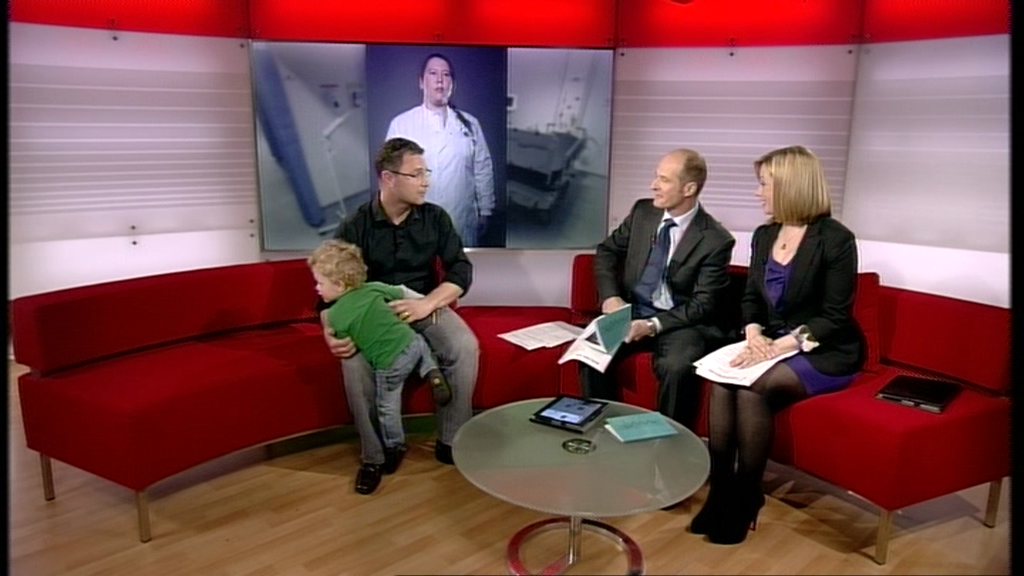
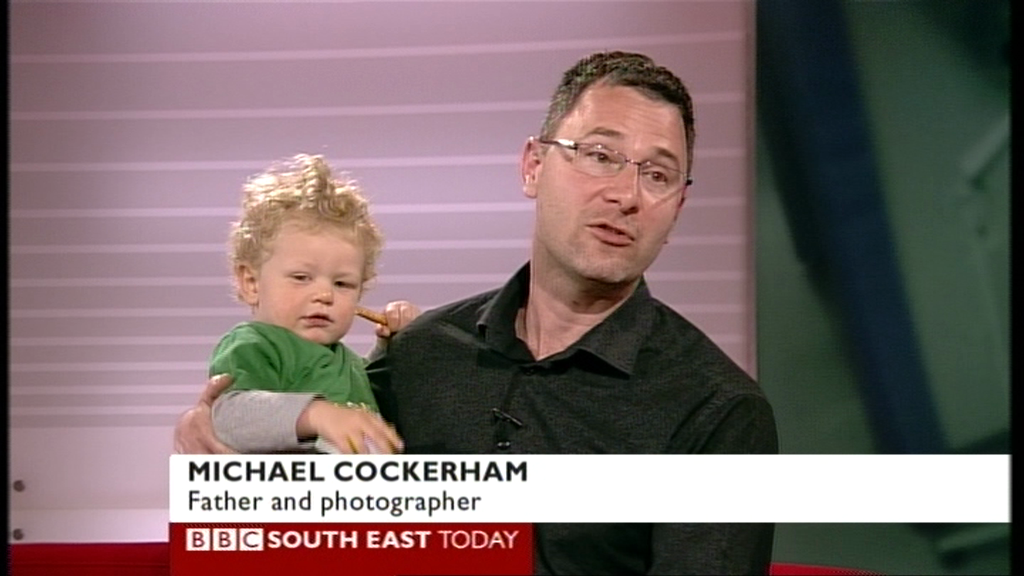
It was a fraught and chaotic period, especially the appearance on Daybreak since the taxi they sent for us got caught in traffic and we ended up arriving at the studio less than five minutes before we were due on air. Walking through the empty sound-stages with people doing our make up as we went was surreal. We sat on the couch opposite the presenters and went on air almost immediately with no time for preparation of any kind.
Within a couple of days I had given an extended live interview on BBC Radio, and started to see references to the story on the international newswires as far afield as Russia and Malaysia. And you really know that the story is big when you get your own tabloid moniker: I had become “Grateful Dad”.
As welcome as all this was it would be disingenuous to suggest that I expected all of it, because I didn’t. But none of it has surprised me as much as the quieter things that have happened and continued to happen since. It was when I began getting messages from doctors who said even they had no idea how many people were involved in treating a single patient that I started to realise the effect Phineas’ Friends was having on people.

Of course the book sold in all three forms, and more money was raised for the Evelina. But then I started getting messages from other parents who were going through the same experience with parechovirus. This blog and my contact with them has helped them to get a better handle on their situation. I suppose it was obvious it might happen, but it genuinely never occurred to me beforehand.
People around me have have also started to change their behaviour. The lady who runs my sons’ kindergarten has taken on the chairmanship of an organisation for the coming year and chosen the Evelina as the preferred charity of the group. Local businesses that I work with have seen fit to have fundraisers for the Evelina, and have arranged for a very clever flyer to go in all their postal correspondence which encourages people to buy the iBook. Most have added a link to the iBook store in their email signature panels to encourage yet more sales. Friends and colleagues have chosen to support the Evelina in their various ways, whether running the marathon, or taking part in the Triathlon event next summer.
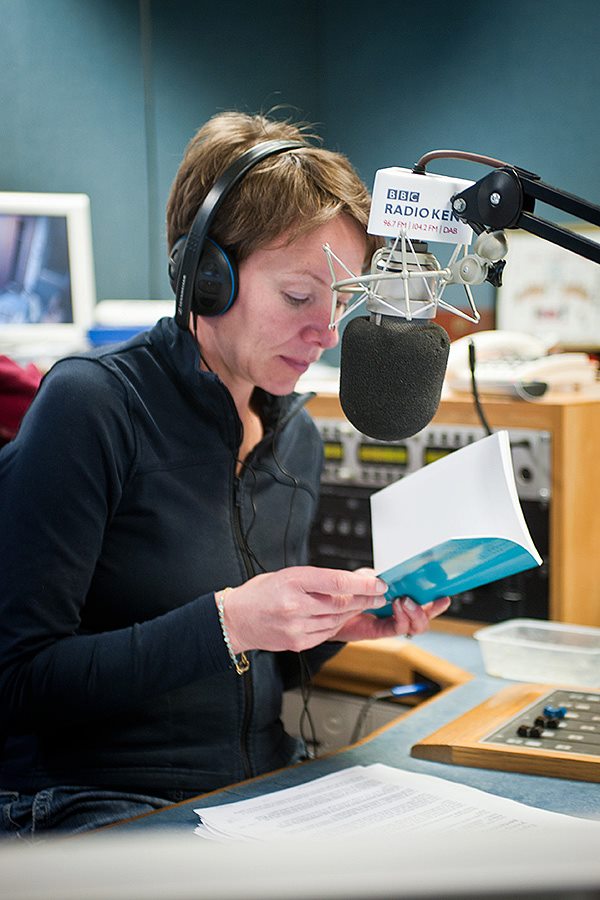
A few months ago I was contacted by a clinical scientist from Edinburgh, a man who has been honoured for his work in transplant science. He told me he had spent three decades trying to persuade managers and politicians that health care is not just doctors and nurses. His assessment was that Phineas’ Friends had done more to address this knowledge gap in one hit than all his efforts and those of his colleagues combined.
As a result of that conversation I received an invitation to give a keynote speech at an annual NHS conference, and will be flying up to Edinburgh on the 29th of November to deliver a 25 minute address to scientists and technicians, and to coincide with this, Phineas’ Friends will be displayed as a temporary exhibition at the Royal Society of Scotland.
In effect they want me to help NHS scientists see themselves not as support staff, but front line clinicians. Are they? Well consider this: if a scientist makes a mistake in the lab it can be as catastrophic for a patient’s treatment as a mistake made by a doctor or nurse. Moreover, the reality is that modern medical practice is becoming ever more specialised, and increasingly scientists are moving to the centre of medical care.
I had thought this might be a strange aberration, but last week I was invited to go to Aberdeen in March to give another address to a different group of medical scientists. It has yet to be confirmed, but the early indications are that I will be doing that too. My impression is that these groups are keen to keep the momentum going, and change the perceptions of the decision-makers and public at large.
But perhaps the most humbling response came at a meeting with people from the Evelina itself a few weeks ago. I had gone to the meeting to discuss various things and to hand over a cheque. What I hadn’t expected was to be asked if I would make a speech at a gala ball and fundraiser for the Evelina to be held in December at Old Billingsgate. They said they wanted me to entertain, inform, and enthuse the guests to give generously. This is a function at which they hope to raise a million pounds; at which the “price” of dinner is £500; at which some six hundred wealthy and philanthropic people will bid on all sorts of fabulous items which have been kindly donated for the purpose.
I was told that a significant part of the reason that the gala is being held is to do with the publication of Phineas’ Friends. I am not sure that I believe that, but it is fair to say the story has had a far greater reach and impact than I could have hoped for in my wildest dreams. If my speech at the gala has the desired effect, then I might be able to say that my work has engendered political progress for health care scientists and raised a million pounds for sick children. Now that really would be a beautiful picture.


Leave a Reply